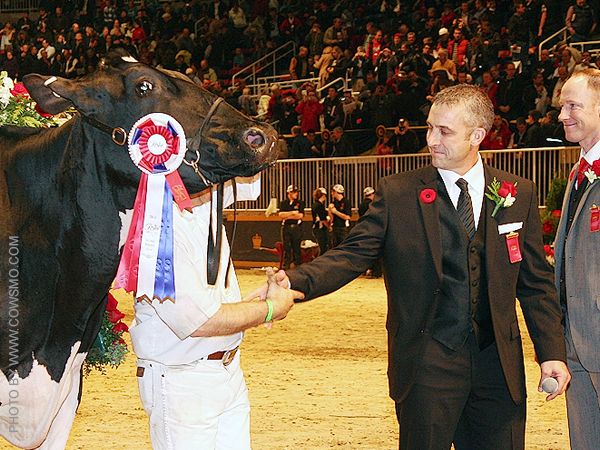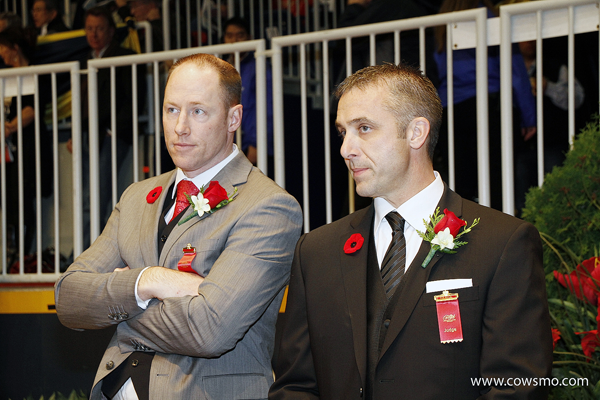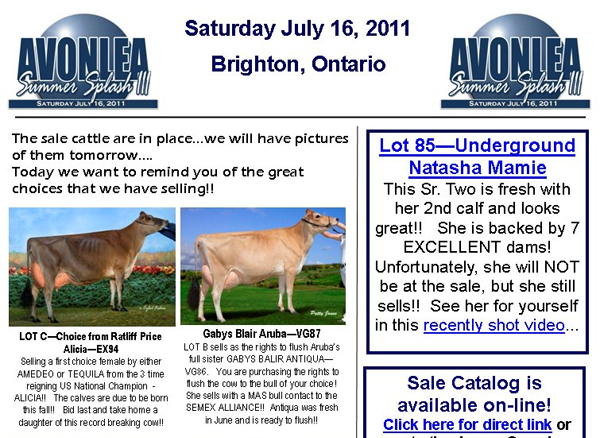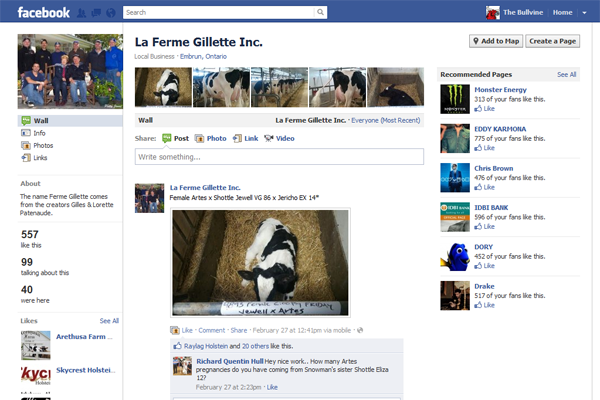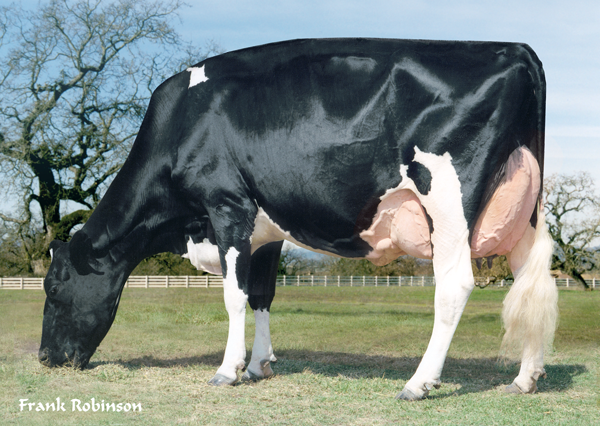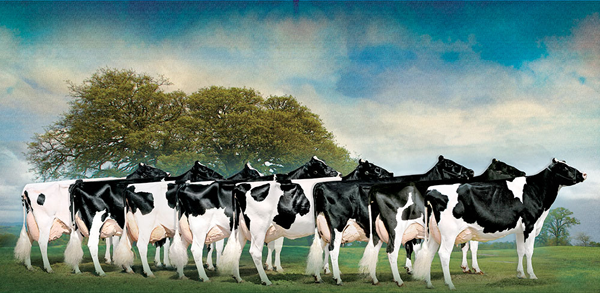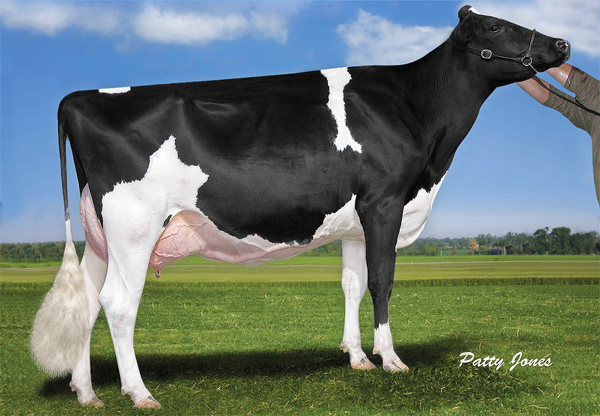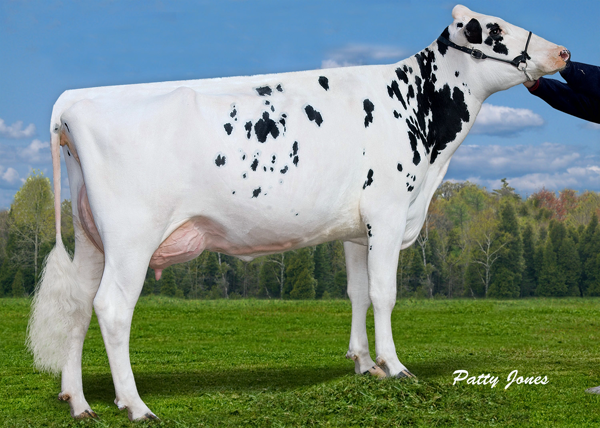We regret to report that R. Peter Heffering passed away Saturday at age 80. Our thoughts and prayers are with his friends and family during this tough time. The Holstein breed has truly lost a legend who will never be forgotten. In honor of Peter’s legacy we have prepared the following history of Peter’s life in the dairy cattle industry.
Setting the Bug
From a young age, Russell Peter Heffering knew he wanted to be a farmer. Who knew that his passion would lead to shaping the Holsteins breed and in partnership with Ken Trevena, Hanover Hill Holsteins would be the epicenter of the Holstein world from 1973 to 1998 and become the most influential Holstein herd on the planet.
Peter’s doctor father always told Peter, “Decide what you want to do with your life and go at it full tilt. And if you’ve decided on agriculture, so be it.”. Moreover, go full tilt is exactly what Peter did. After a family vacation in Vermont, it was decided that Peter would spend a summer working on a sheep farm, and with that, the life path for Peter would be set. In an exchange of labor with a neighbor, it was decided that Peter would help them prepare their Jersey’s for the local show. Through much coaxing of Peter he was able to talk them into allowing him to show one heifer. While the heifer finished at the wrong end of the class, young Peter would get the “show bug” and find his calling with dairy cattle.
The show bug, when it hits, sometimes hits hard. In Peter Heffering, the bug has maybe never hit harder. Over the next few summers, Peter would continue to work on the Jersey farm as well as a neighbor Ayrshire farm, this time starting to sit at the top of the class. With this, Peter now knew how he would spend the rest of his life. In high school classrooms during the years that followed, he would often seem distracted. When he graduated, he told his teachers that he would be buying a dairy farm, and he would own a herd of show cattle. Man was that an understatement.
The Beacon Research Farm
After finishing high school, with his parents blessing, enrolled in the animal husbandry program at the New York State University. He graduated in 1951 and took his first job with The Beacon Research Farm for $125 per month. The Beacon Research farm was used by a milling company for research and to demonstrate recommended farm management best practices. While Peter would be very busy with his daily tasks, evenings would find Peter prepping the show herd or training the herd’s show prospects out on the lawn beneath the yard light.
Peter Heffering met his future wife on a summer’s night at a dance by a lake at Auburn, New York. He was married June 1952. At that time, his beacon salary was $168 per month and his wife, a nurse, brought home $125. The family’s long-range plan was to own a dairy farm and to that end, they scrimped and saved. The sum of $15 per week was allocated for purchase of groceries, and food for the baby came first. If the total at the grocery store checkout came to more than $15 the surplus was taken back to the shelves.
The Forming of One of the Greatest Partnerships of All-Time
The Beacon organization, aggressive on feed research, manufacturing and marketing, had tightened the purse strings when it came to showing cattle. However, despite the challenges Peter was able to help them win four All-American awards in his time with them. But probably the most notable development while Peter was in 1958 when he hired Ken Trevena as a herdsman. And when Peter left Beacon in 1961 to partner with James Houlahan and his Tara Hills program, Ken went with him.
Success came quickly, in 1962, they had five animals nominated All-American. The years that followed continued to grow on that success. However, in 1967 at the urging of his neighbor/actor James Cagney, and despite the success that Heffering had brought him, Houlahan decided to break up the partnership.
In the Tara Hills Dispersal , 205 head averaged $1,900, and would see the first of Heffering and Trevena’s world record prices set by Future Hope Reflection Blacky, who sold to Rowntree Farms for $44,0000. Also in that sale, Heffering and Trevena paid $127,250 for forty-one head. The two would rent an investment farm from Hanover Hill Guernseys in Amenia to house and develop these cattle.
The Amenia Farm
At the new farm, Heffering and Trevena followed the old road map; an impeccably managed stable; a well-travelled show herd; a breeding program intelligently planned; and back cover Holstein World advertising. By July 1968, they were able to advertise, “We think we have one of the finest groups of foundation Holsteins ever assembled. Our milking herd averages just under 90 points.” In the first year of operation, they had one All-American and one reserve.
Nevertheless, nothing lasts forever. The lease ran out on the Amenia farm on January 1, 1973, forcing a move. The partners decided to sell their herd. The 1972 Hanover Hill Dispersal equaled in scope and profile the breed’s epic events. In it, six world records were broken. With 286 head selling for $1,143,675, a $3,998.86 average, it was the first purebred dairy cattle dispersals to gross more than one million dollars, Johns Lucky Barb (EX) and her eight-member family sold for a record of $350,5000, an average of $43,812.50.
The Move to Canada
Through the 1950’s and 60’s Heffering and Trevena had purchased many cattle In Canada as well as shown at the Royal Winter fair. They had made numerous sales of cattle to Canadian exporters and breeders and admired the Canadian panache in the development of worldwide markets. Another reason for an emigration to Canada was clash of philosophies. In the early 1970’s, the United States artificial insemination industry, backed by the U.S. scientific community as represented by its geneticists, was placing an ever-increasing emphasis on single lactation production. The all-important factor according to these people was index. Peter always felt that the index system, which he called “the numbers game,” should be treated not as a gospel but as another tool available for dairymen’s use.
In addition he felt that the manipulation of the numbers did not ensure that the best product, and while people around the world may have felt that the index system was infallible, statistics had shown otherwise. The Heffering-Trevena breeding approach, which stressed the importance of strong cow families, type, style, and longevity, wasn’t designed to produce high index sires, and Hanover Hill bulls were therefore not attractive to the U.S. industry. On the other hand, the Canadian attitude paralleled theirs, so that these men where certain that the bulls bred by them would appeal to the Canadian A.I. industry.
For these reasons, Heffering and Trevena in 1973 decided to pull up their New York stakes and move their operation to Canada. They purchased a 150-acre spread of rolling land near Port Perry, Ontario in the heart of cow country. The Hanover Hill next-door neighbors were Murray and Barney Holtby, and the High Point farms of the Smith brothers and the Roybrook farm of Roy Ormiston were nearby.
Twenty-five years later the partners would say that the decision to move to Canada had been the right one. By taking a balanced breeding approach, Hanover Hill was able to produce bulls that Canadian A.I. units appreciated and used. Bulls that in many instances would have not been for young sire proving programs in the United States were greeted with open arms by the Canadian studs.
Taking Things to a Whole New Level
The Hanover Hill modus operandi called for Ken Trevena handling the day-to-day management of the herd, while Peter Heffering looked after the showing, merchandising and business end of things. They worked together on the breeding program. The herd consisted of about 375 head, of which 100 cows were in milk. Embryo transfer was also used extensively, and for that, they needed to have a large number of recipients around. Their goal was to develop a deep pedigreed herd, all of its members with three or more generations of Very Good or Excellent dams, and producing 20,000 lbs milk with 3.7% fat test or better.
From the start, they knew that for Canada to compete on the world markets of the future, it would be necessary to push cows for higher production, which involved feeding them more grain. When Heffering and Trevena came to Canada, they felt that the feeding policies of most breeders where behind the times compared to the United States. For Canadian Holsteins to continue to compete on a world basis, Heffering realized, things would have to change, and quite drastically. One other fact stood out with clarity in his mind: any innovation in the United States, history had shown, within five years would inevitably reach Canada.
The Hanover Hill Cow Families
- Johns Lucky Barb (EX-97-4E-GMD 5*)
Transmitting primarily through the female side, she became one of the breeds primary money getters. In the fullness of time, the Barb family would shatter eight world price records in public auction offerings.
- Mil-R-Mor Roxette (EX-GMD-30*)
As a business proposition, Roxette was a money tree. She had nine family members sold for a total of $491,500 at the 1985 Dispersal; at the 1987 sale, seven-teen ET daughters under two years of age brought $85,700; at the 1989 Hanover Hill Dispersal, thirty-seven members of her family, including eighteen daughters, fetched $601,900; and at the 1991 Bond Haven Dispersal, nine daughters and six granddaughters sold for $113,400.
- Tora Triple Threat Lulu (EX-GMD-11*)
In the final years of the Hanover Hill herd, the Lulu`s and the Roxies were its beating heart.
- Overlook Farm Anna Marquis (EX)
Her Astronaut daughters were among the best the breed has produced.
- Cathland Countess (EX-7*)
Her Hollywood looks approximated the true type model of the time.
- Brookview Tony Charity (EX-97-USA-11*)
Often described as Incredible Perfection, compiled a record not soon to be equaled – six superior production awards, nine times All-American and All-Canadian, never defeated in class. Most importantly, Charity takes her place in history as the only female to win grand champion honors at the Royal Winter Fair four times, and only one to four time take the Supreme Championship at Madison.
The Show Record
For Hanover Hill Farms, the road toward the mountaintop passed through the show ring. In sum the Hanover Hill herd earned 140 All-American nominations resulting in 31 All-Americans and 31 Reserve winners, while 87 nominations for All-Canadian resulted in 23 All-Canadians and 21 Reserve prizes. The farm garnered Premier Exhibitor banners at the Royal Winter Fair six times and at Madison thrice. Heffering and Trevena are the only men to exhibit six Supreme Champions as Madison.
Nine Class Extra Sires
The proof of any genetics program often can be told through their male lines. In breeding nine class extra sires Peter and Ken established the record for their era, since bettered by Ferme Gillette.
- Hanover Hill Starbuck (EX-Extra)
The first Class Extra sire for Hanover Hill, his influence, particularly through his sons and grandsons, has extended to every corner of the globe.
- Hanover Hill Inspiration (EX-Extra)
Sire of Boulet Charles (EX-ST) as well as the dam of Maughlin Storm (VG-Extra)
- Hanover Hill Raider (EX-Extra)
With Hanover Hill breeding on both side of his pedigree (Starbuck x Roxette) Peter considered Raider one of the best bulls ever bred by them.
- Hanover Hill Lieutenant (EX-Extra)
Another Class Extra sire with Hanover Hill on both sides of his pedigree (Starbuck x Hanoverhill Chief T Lulu)
- Hanover Hill Lincoln (Ex-Extra)
A bull with the ability to transmit type and high component yields, Lincoln had a full brother, Hillstar, who became one of Germany’s rated conformation sires.
- Hanover Hill-SS Clyde (EX-Extra)
Make this #3 Class Extra sire with Hanover Hill on both sides of the pedigree.
- Hanoverhill Stardom (VG-Extra)
#4 Class Extra sire with Hanover Hill on both sides.
- Hanover-Hill Mirage (EX-Extra)
#5 Class Extra sire with Hanover Hill on both sides of the pedigree. In fact Mirage complete 3 generations of Hanover Hill Class extra sires (Starbuck, Raider, Mirage)
- Hanoverhill Premier (EX-Extra)
The final Class Extra sire for Hanover Hill.
This is not to say the farm’s influence came solely through these nine bulls. Hanover Hill Triple Threat (VG-GM) was not a class Extra sire, yet his impact was substantial. In addition to the nine Class Extra sires, twenty-one Hanover Hill bred bulls earned Superior Type recognition and seven of them carried away Superior Production honors.
The 1985 Hanover Hill Dispersal
With the 1968 Internal Revenue Code still in place propelling the North American Holstein industry into frenzy and a very optimistic economic climate, Heffering and Trevena decided to hold a sale, and what a sale it was. Held at the farm on July 15 and 16 1985, before an audience of 2,500 people, the world’s best-known herd at the time, went under the gavel of auctioneer Bob Shore. Records tumbled. 302 head grossed $7,039,200 for an average of $23,308.61 to make this the highest volume and highest averaging sale ever held in Canada at the time. On the 2nd day, Brookview Tony Charity (EX) became the first dairy animal to sell for over a million dollars when she brought $1,450,000 selling to Steve Roman of Romandale Farms.
The 1987 Hanover Hill Dispersal
The strong results of their embryo transplant program had pushed heifer numbers to the point where another sale was held on July 13th and 14th 1987. An average of $7,203.73 was realized on 201 head, eighty percent of which were females under milking age.
The 1989 Final Chapter Sale
By 1989, the time had come for Hanover Hill’s final chapter. At the sale held on July 10 and 11th at the farm global interest in the Hanover Hill bloodlines was apparent. 107 head sold to Canadians; 115 to United States breeders as well as buyers from Spain, England, Japan, Brazil, Ireland, Scotland, Sweden, and Argentina. 341 lots sold for an average $14,711.73, a total of $5,016,700. The average was the third highest in Canadian history at the time surpassed only by their own 1985 dispersal and the Cormdale Dispersal held earlier that year.
The 1998 Hanover Hill Dispersal
As Peter and his son, David’s focus had shifted to standardbred horses, the complete dispersal was held on July 14th and 15th 1998. 289 head sold for an average of $8,415.22 for a total of $2,432,000. Again breeders from all over the world came to get their last chance at these great bloodlines. At the sale’s opening legendary pedigree man Horace Backus said, “In the history of the Holstein breed, there have only been four or five herds that have created a distinct bloodline. Today we are selling a distinct bloodline herd.”
The Success Continues in Harness Racing
In 1989, Heffering made his entrance into harness racing and enjoyed great success. He owned, either in whole or in part, an impressive list of horses that included Precious Bunny, Riyadh, Pacific Rocket, Kadabra, Strong Yankee, and Majestic Son. His champions won the most coveted races in the sport, including the Little Brown Jug, North America Cup, Meadowlands Pace, Canadian Trotting Classic, Kentucky Futurity, Breeders Crown and numerous Ontario Sires Stakes events.
In 1996 he and his son David opened Tara Hills Stud in Port Perry, Ontario, that is today one of North America’s premier Standardbred breeding operations. In 2012, 11 stallions stand in their state-of-the art stallion barn.
The Bullvine Bottom Line
There is no doubt that the partnership between Peter Heffering and Ken Trevena changed the dairy breeding industry world. From show records that have stood the test of time to sires that set the pace of their generation, Hanover Hill is certainly one of the 4-5 greatest breeding programs in history. In building Hanover Hill, Peter Heffering was extremely astute, driven, and modest. Always quick to credit others in accepting a Certificate of Superior Accomplishment from the Holstein Association of Canada in 1992, Heffering paid tribute to the many young men and woman dedicated to the purebred industry that helped make Hanover Hill a success”. The final recognition by his Canadian peers came when he was inducted into the Canadian Agricultural Hall of Fame. Today a man gone but his examples will not soon be forgotten.
For a full history of the Canadian Holstein breed check out “The Chosen Breed” by Edward Young Morwick.
Other posts you might like:








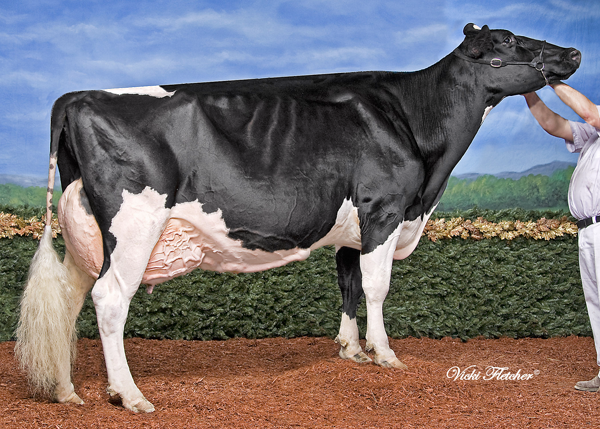
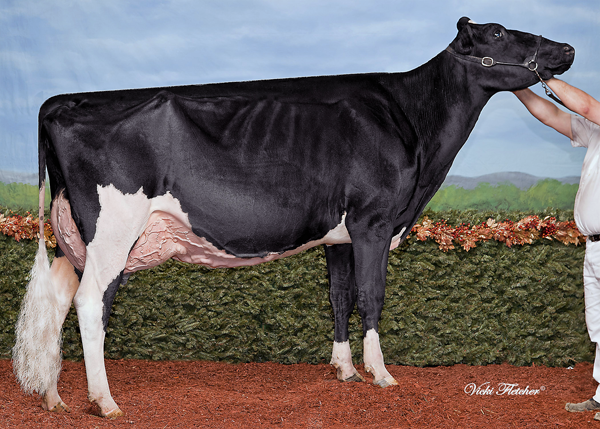
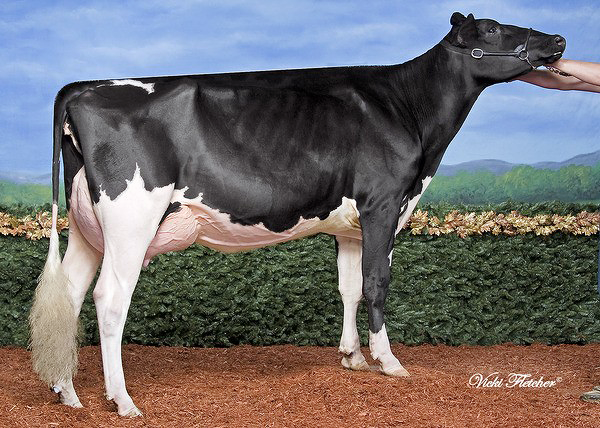
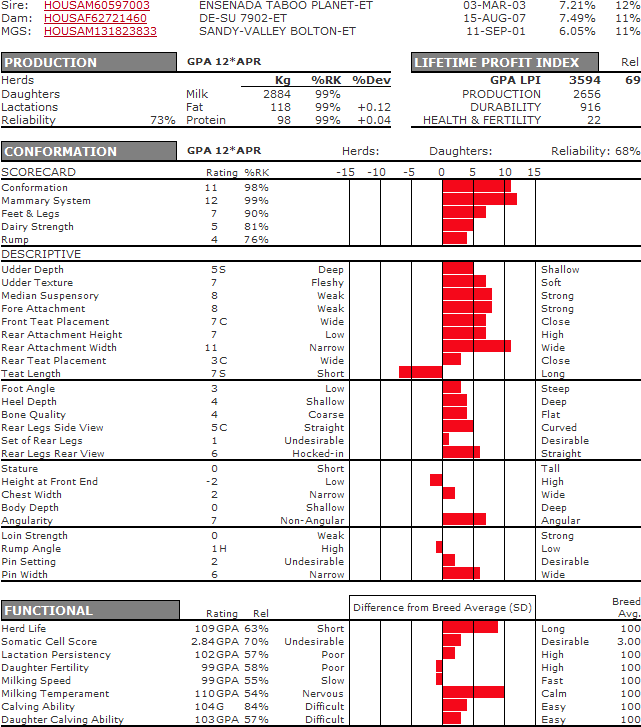
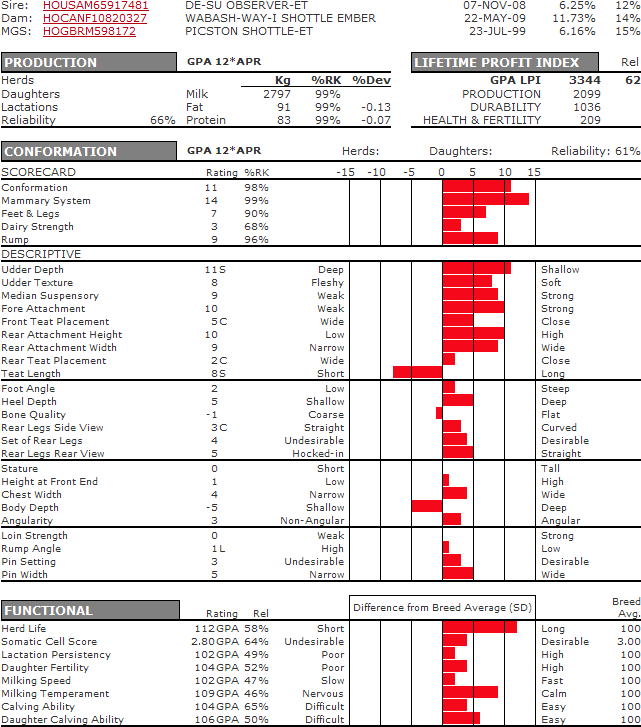
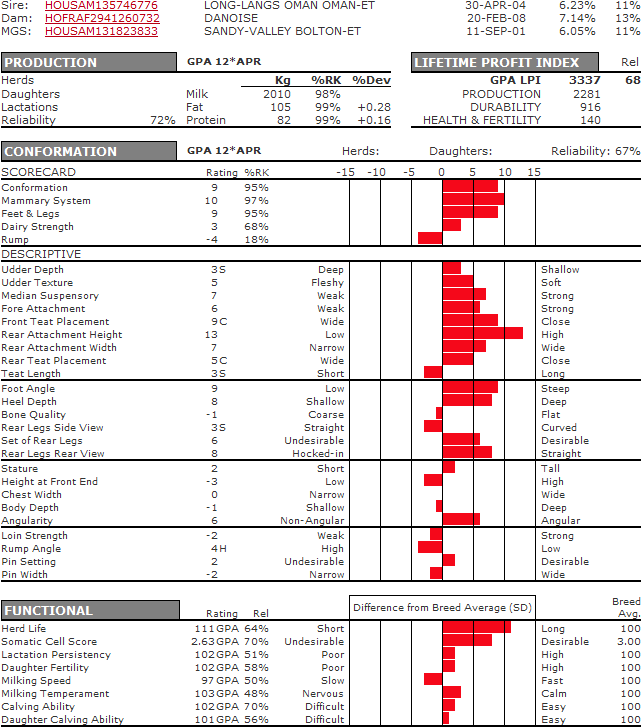
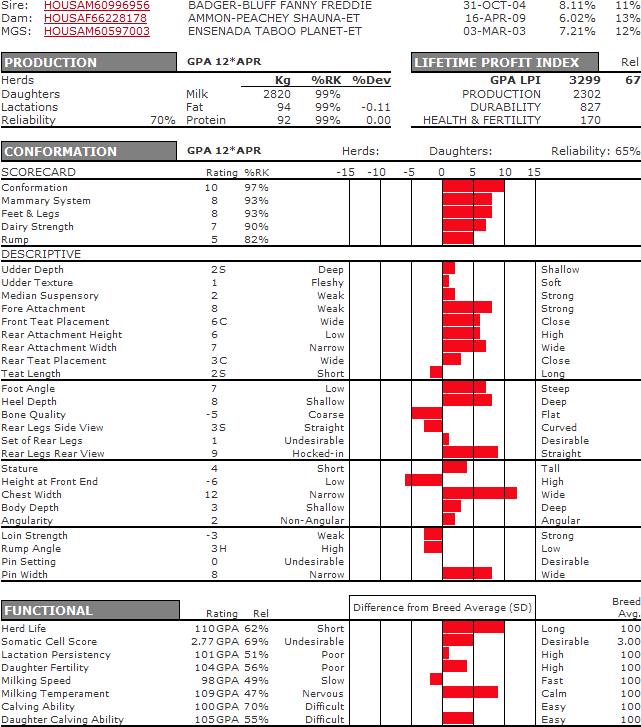
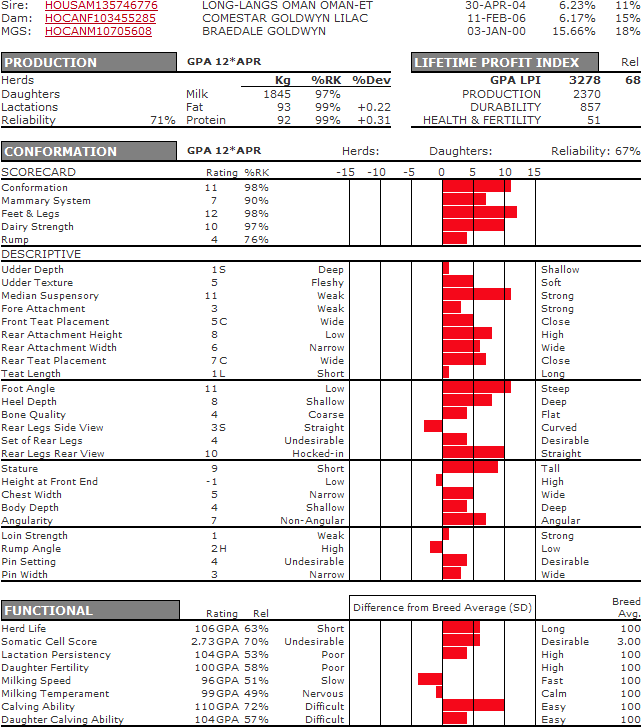
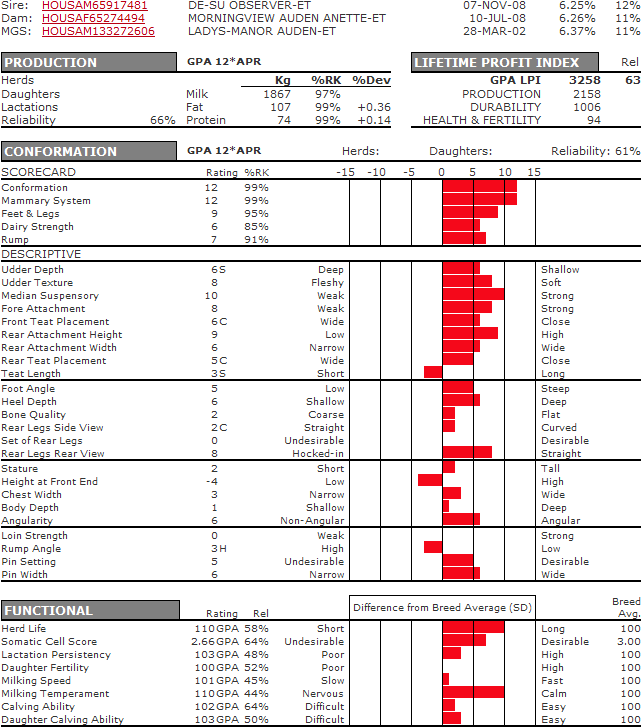
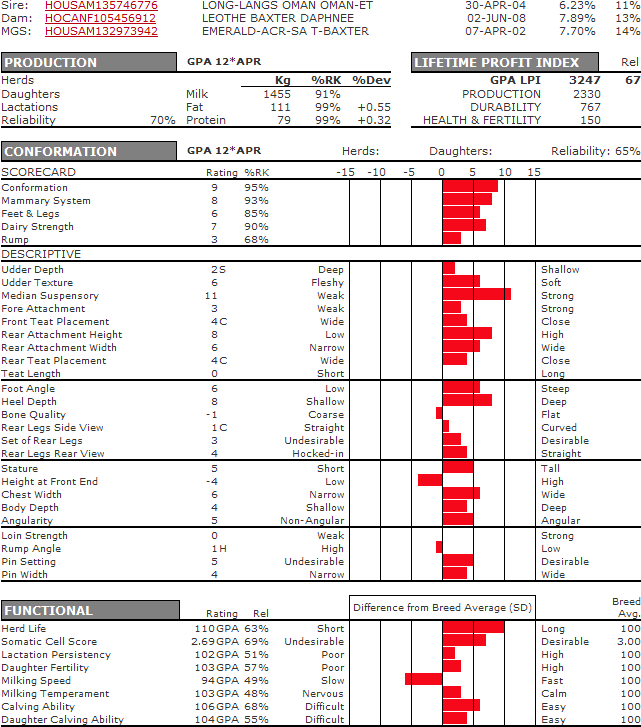
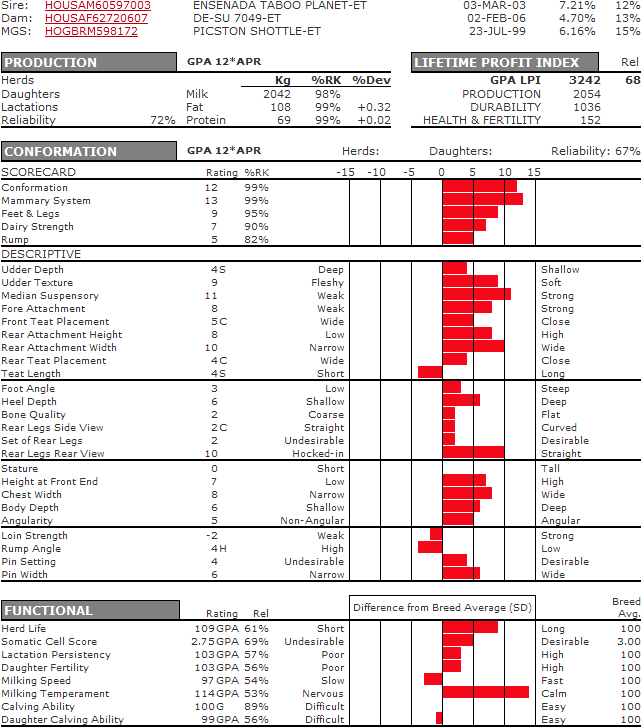
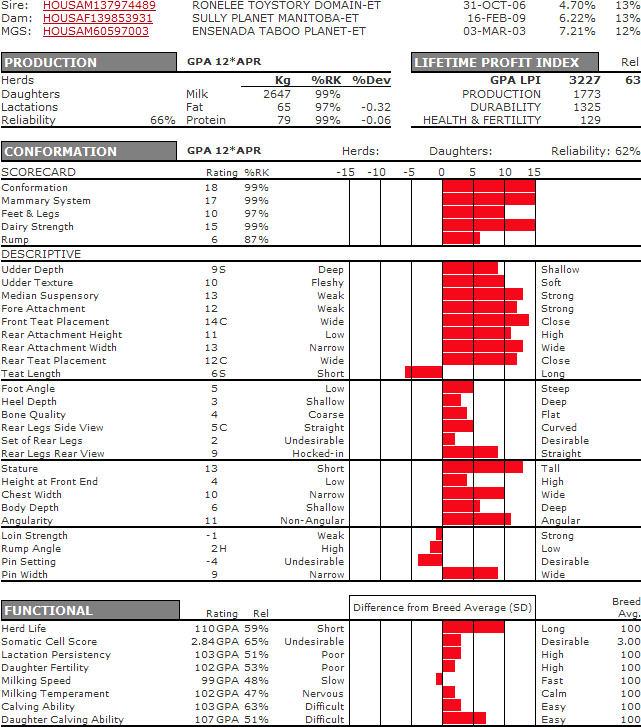
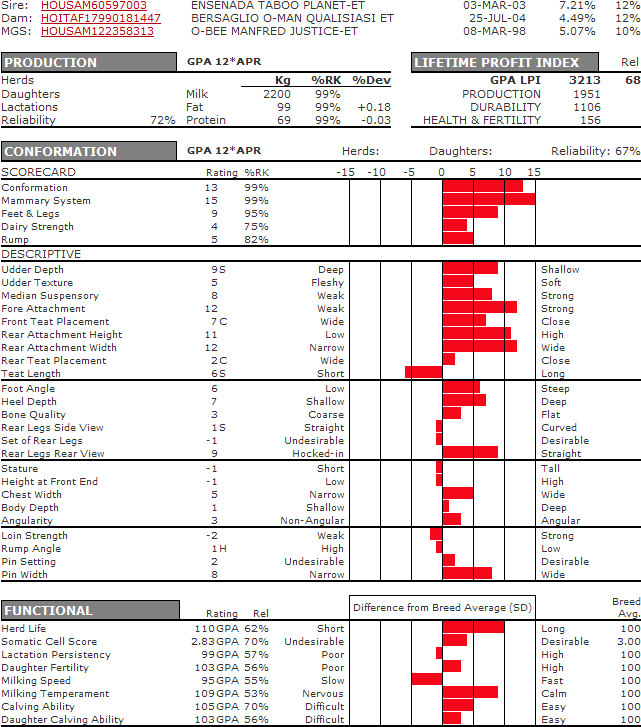
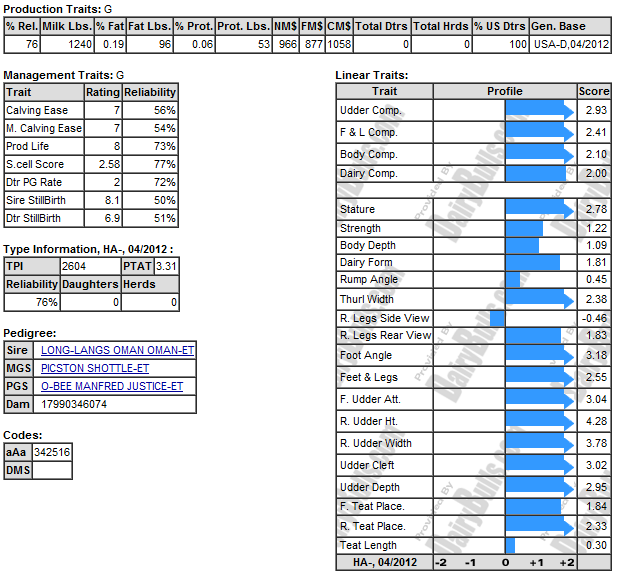
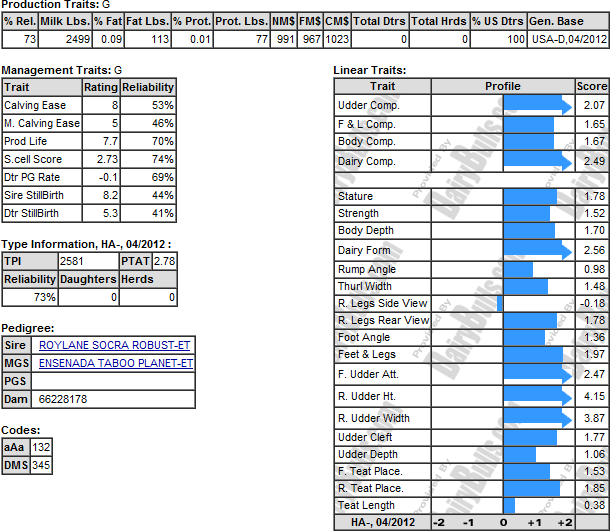
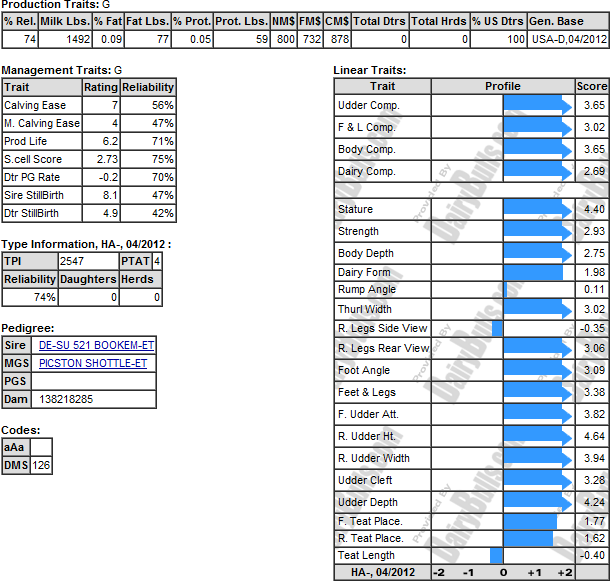
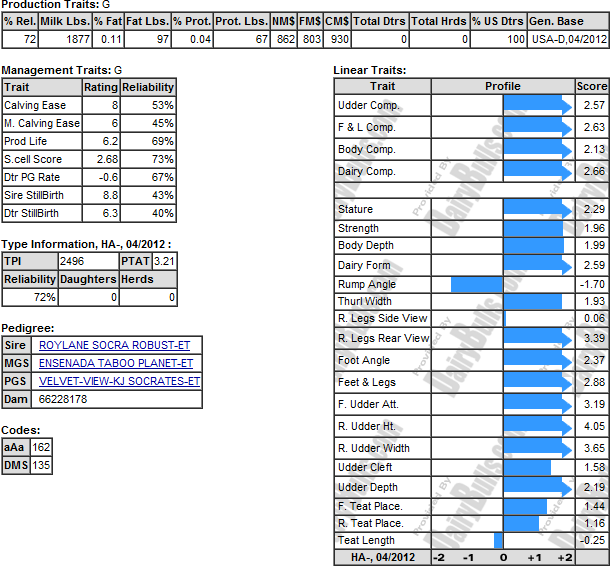
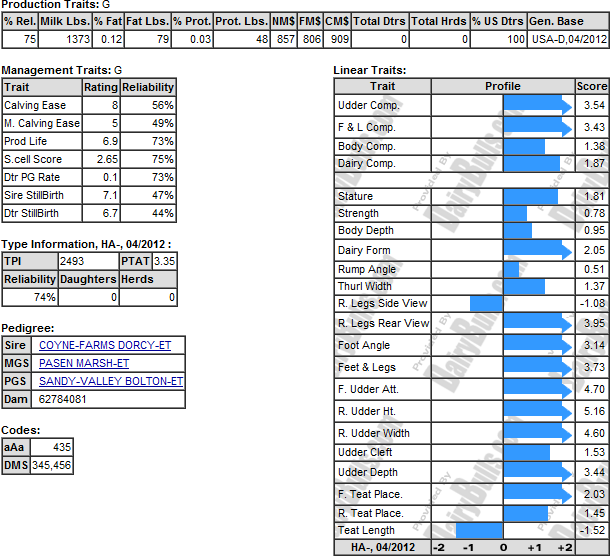

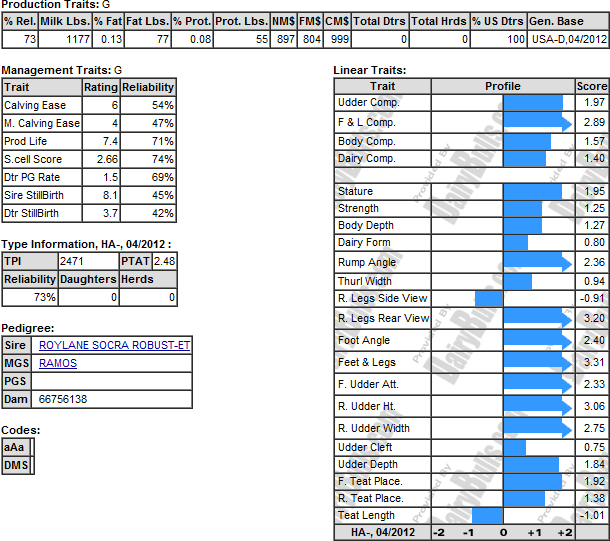

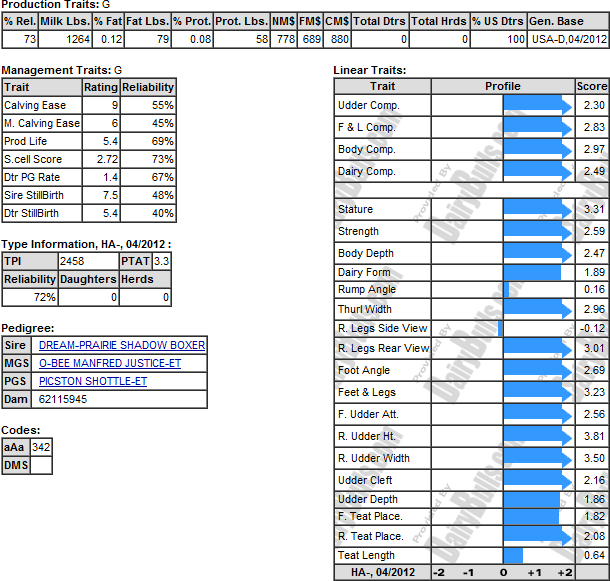
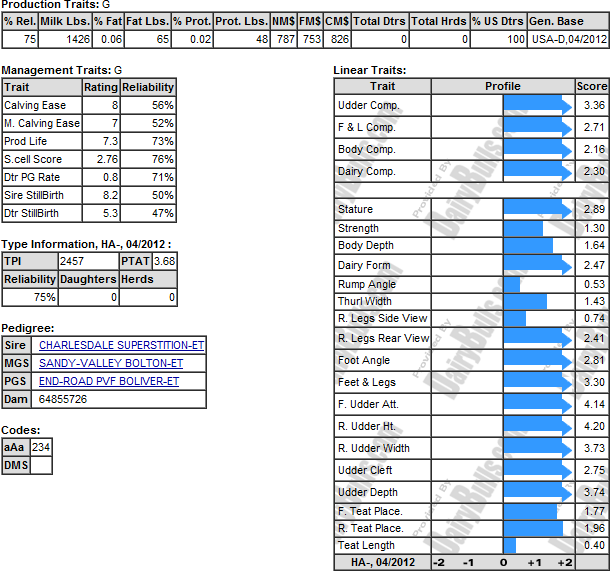
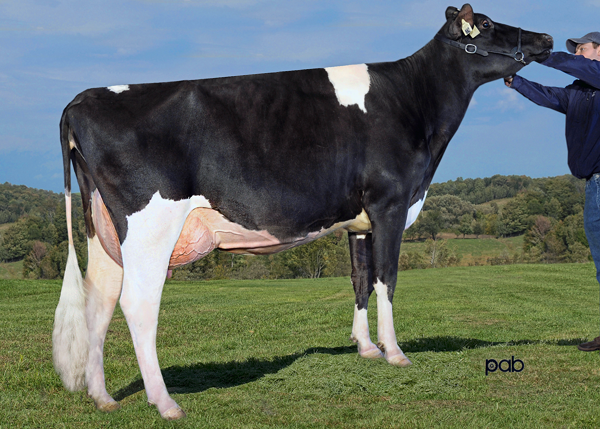
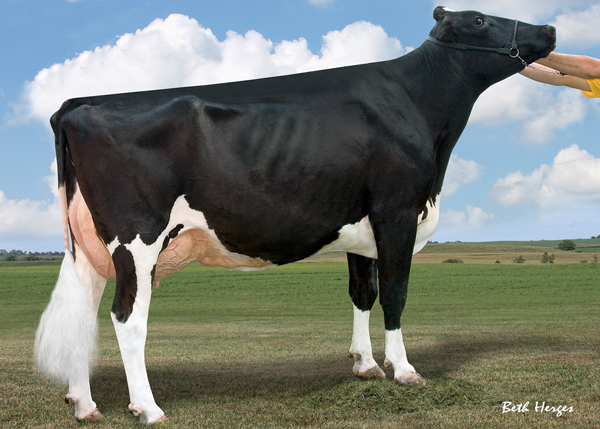
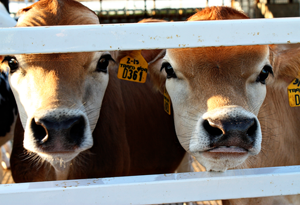
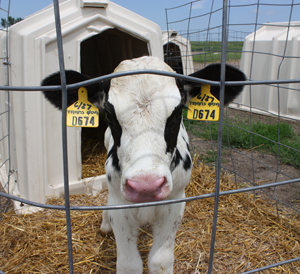 AT THE END OF THE DAY, LOOK FOR BIG BENEFITS NOT PREVIOUSLY ACCESSIBLE
AT THE END OF THE DAY, LOOK FOR BIG BENEFITS NOT PREVIOUSLY ACCESSIBLE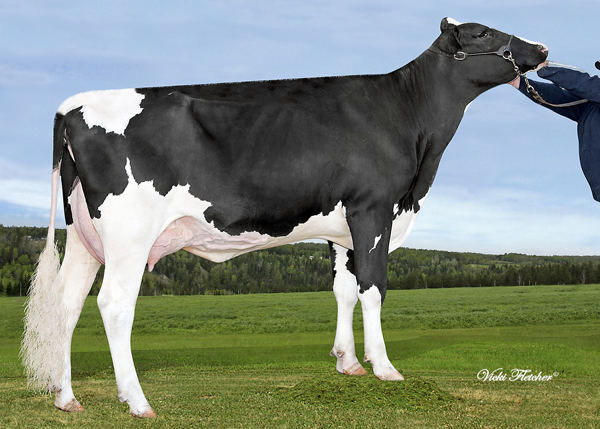
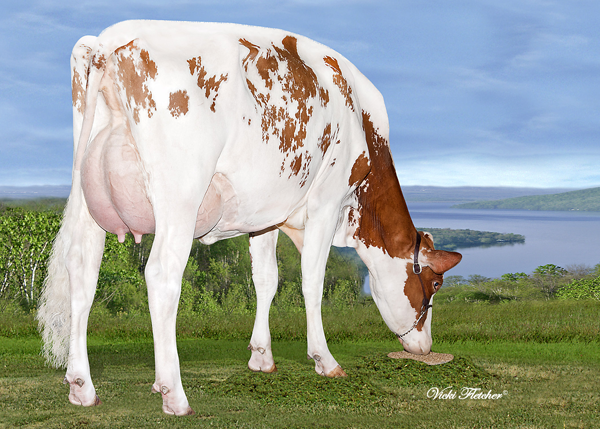
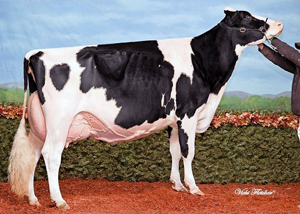


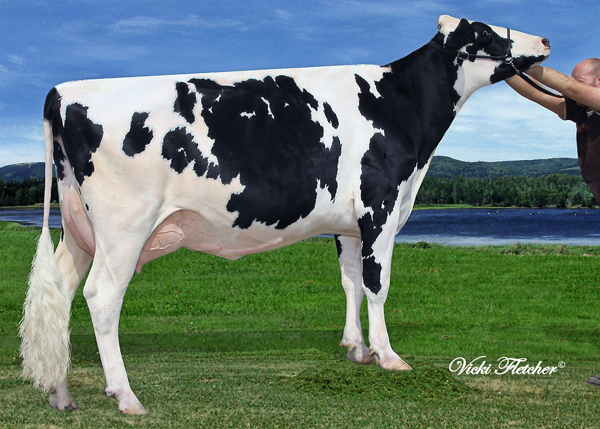
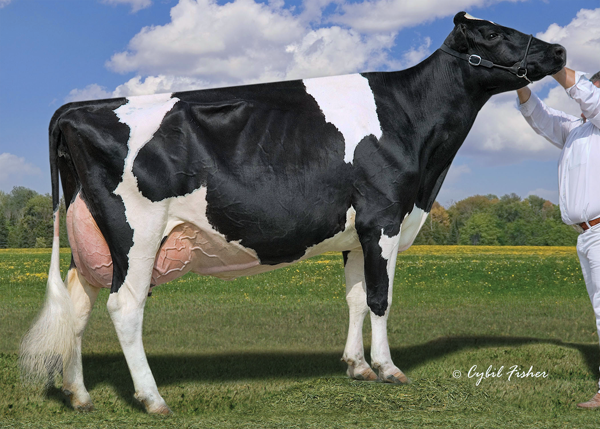
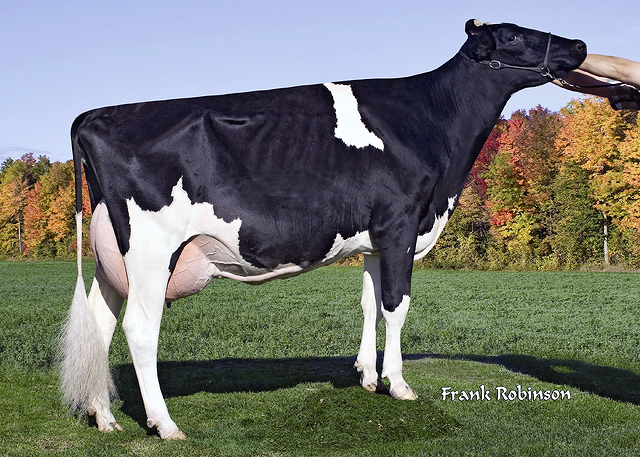
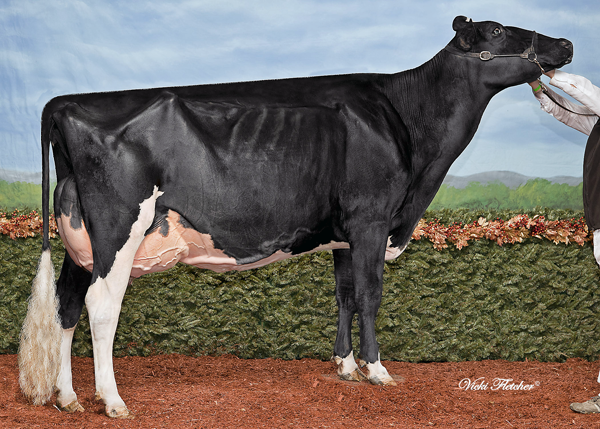
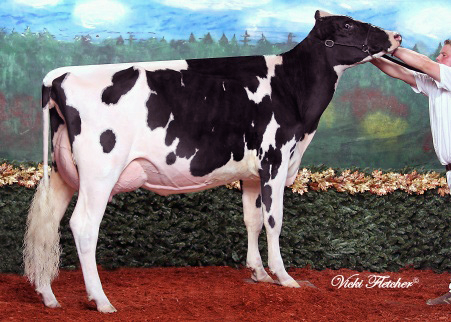
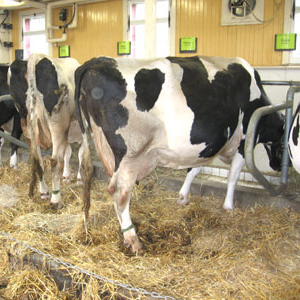 In order to get maximum results from their genetics programs, many top programs needed to have their top cattle score significantly higher than the other animals scored that same day. While many people deemed these herds “Hot Houses”, in reality they are just working the BLUP system to get maximum results. Since the calculations also took into account the genetics of the other animals scored, these “hot house” herds needed to have daughters of high type bulls that would score lower than the selected cattle that were typically sired by bulls with lesser conformation scores. For example, you have a low value cow sired by a +14 conformation sire that goes 79 points, and a high conformation cow sired by a +6 conformation sire that goes 86 points. This would provide the selected cow with the greatest difference over the expected value and have significant improvement in their EBV for conformation and thereby in their overall total merit.
In order to get maximum results from their genetics programs, many top programs needed to have their top cattle score significantly higher than the other animals scored that same day. While many people deemed these herds “Hot Houses”, in reality they are just working the BLUP system to get maximum results. Since the calculations also took into account the genetics of the other animals scored, these “hot house” herds needed to have daughters of high type bulls that would score lower than the selected cattle that were typically sired by bulls with lesser conformation scores. For example, you have a low value cow sired by a +14 conformation sire that goes 79 points, and a high conformation cow sired by a +6 conformation sire that goes 86 points. This would provide the selected cow with the greatest difference over the expected value and have significant improvement in their EBV for conformation and thereby in their overall total merit. With the introduction of genomic evaluations in August 2009, the effects that any “hot house” efforts can have has been reduced in the genetic indexing systems. This is because for young cows in first or second lactation, the relative weighting for Direct Genomic Value (DGV) compared to traditional Estimated Breeding Values (EBV) is roughly 55:45 (
With the introduction of genomic evaluations in August 2009, the effects that any “hot house” efforts can have has been reduced in the genetic indexing systems. This is because for young cows in first or second lactation, the relative weighting for Direct Genomic Value (DGV) compared to traditional Estimated Breeding Values (EBV) is roughly 55:45 (
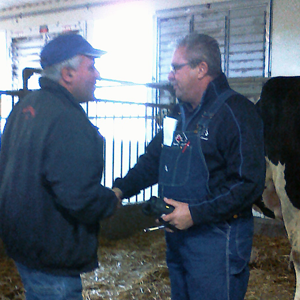 UDDERLY EXCELLENT
UDDERLY EXCELLENT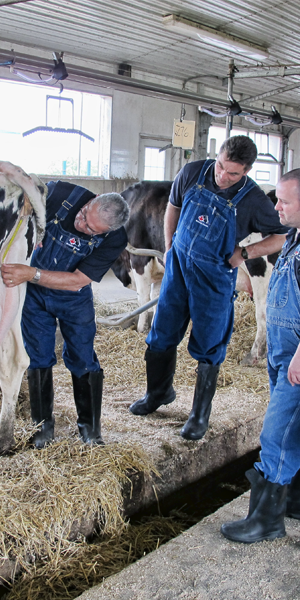 FACING FORWARD WITH CLASSIFICATION
FACING FORWARD WITH CLASSIFICATION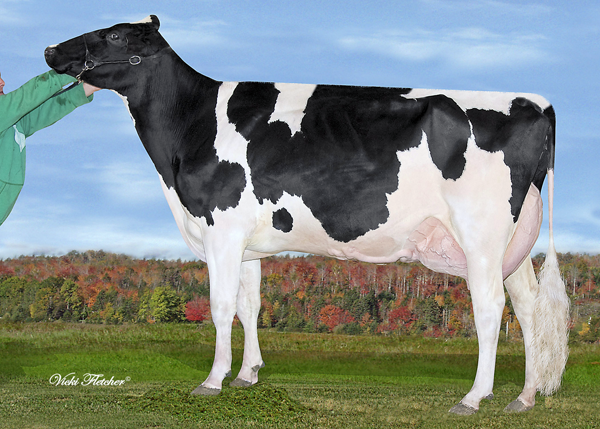
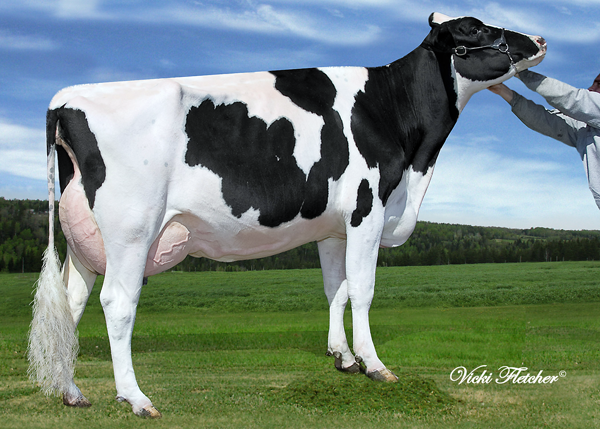
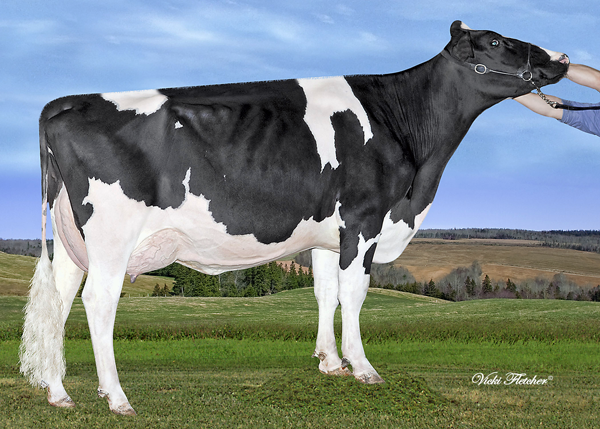
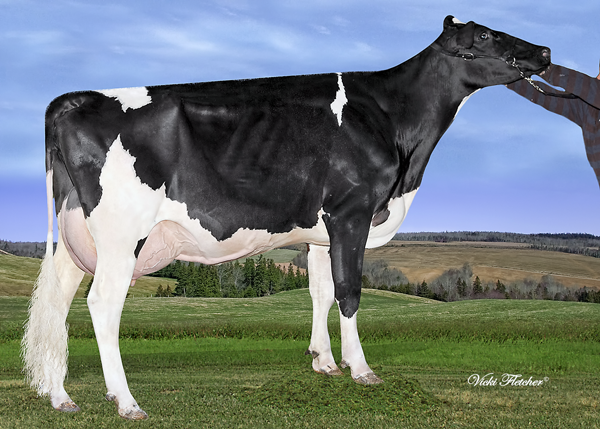



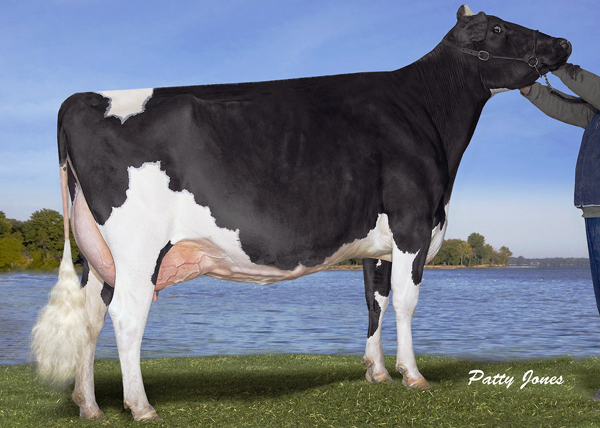
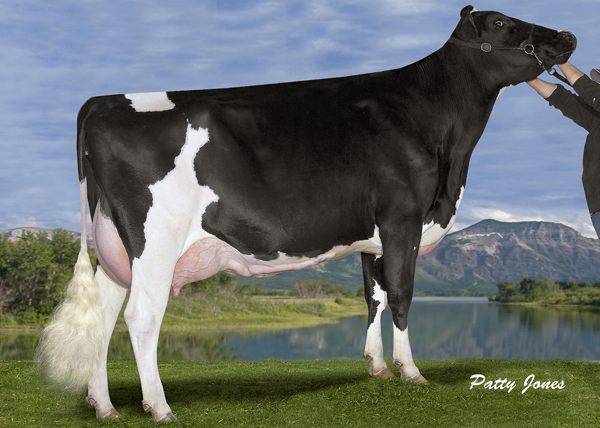

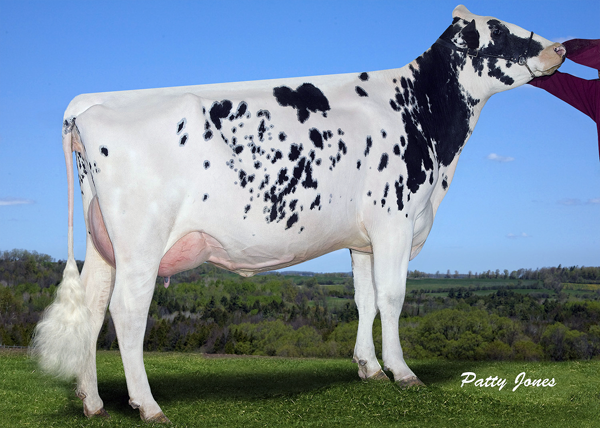

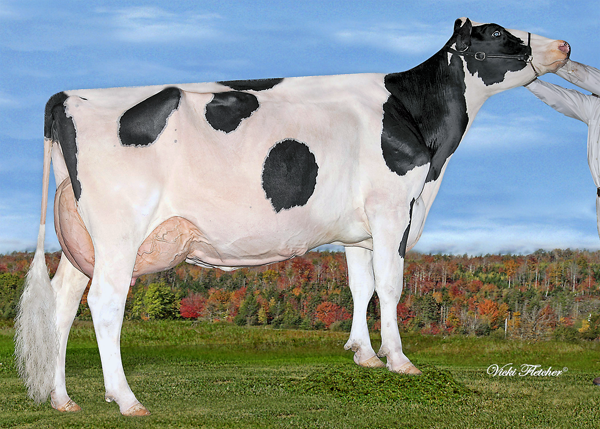
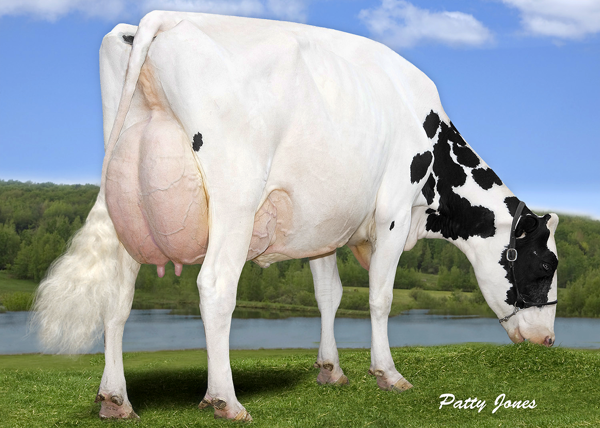

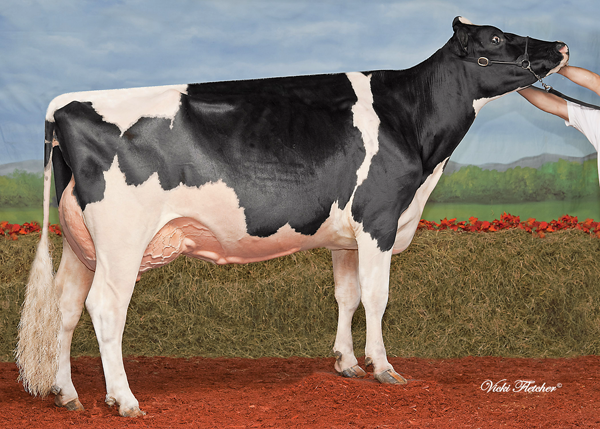
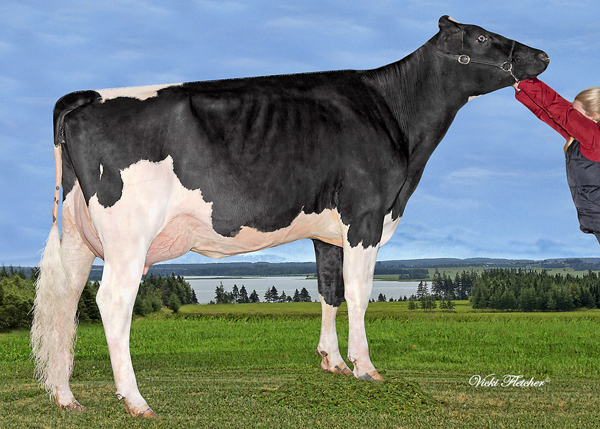
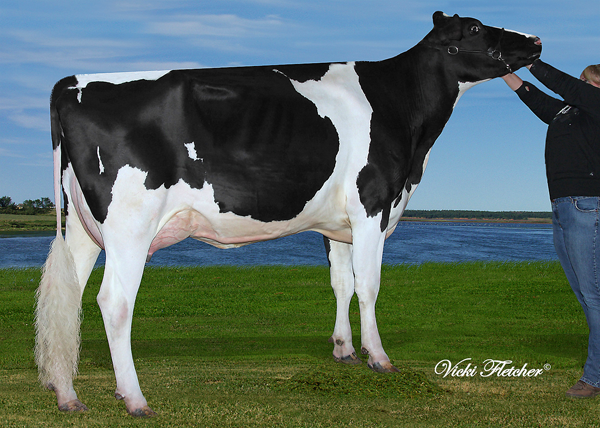
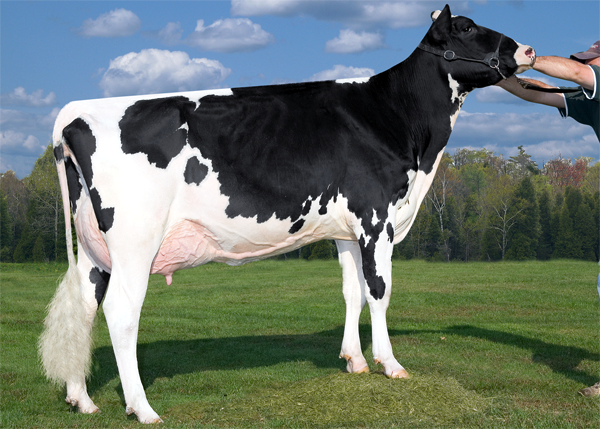
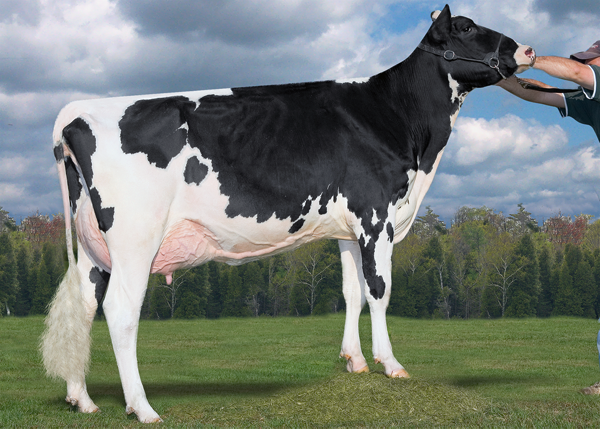
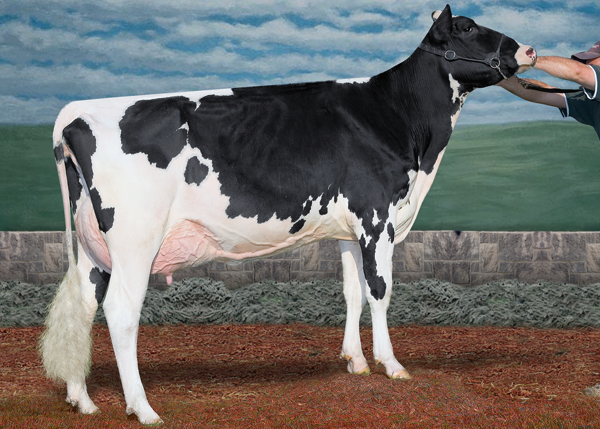
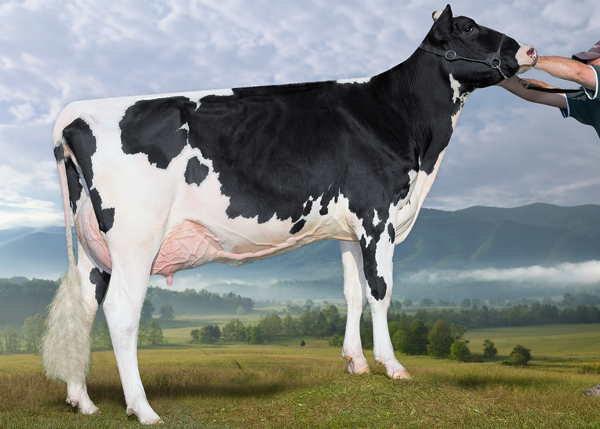
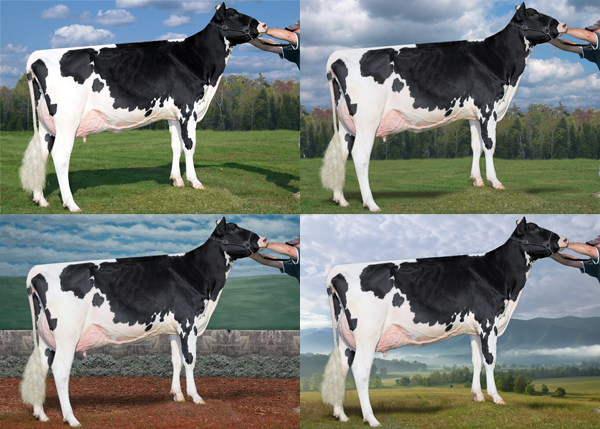
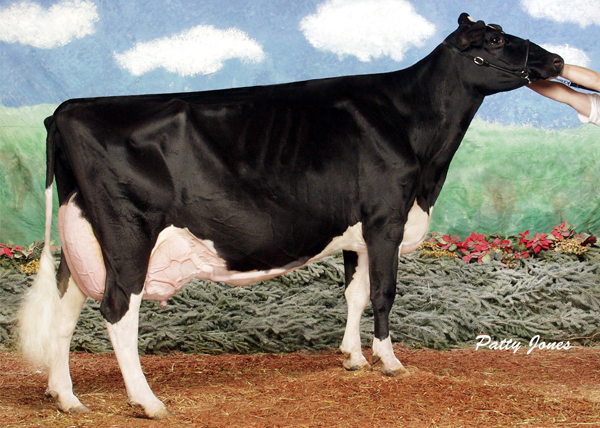
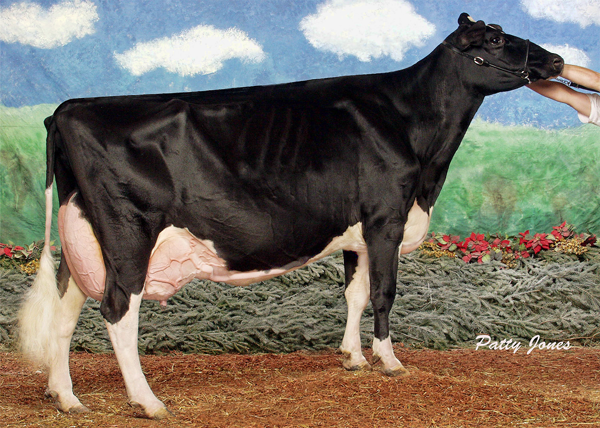
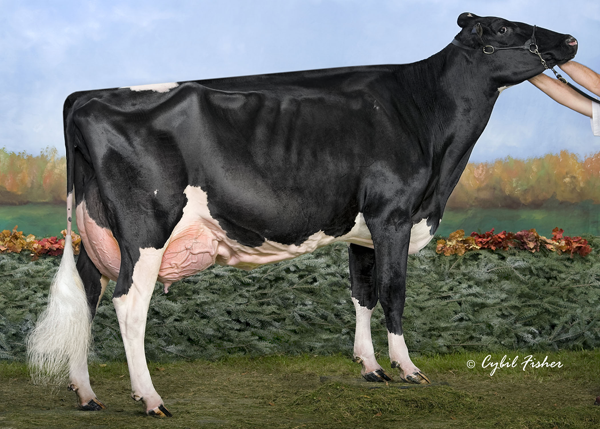
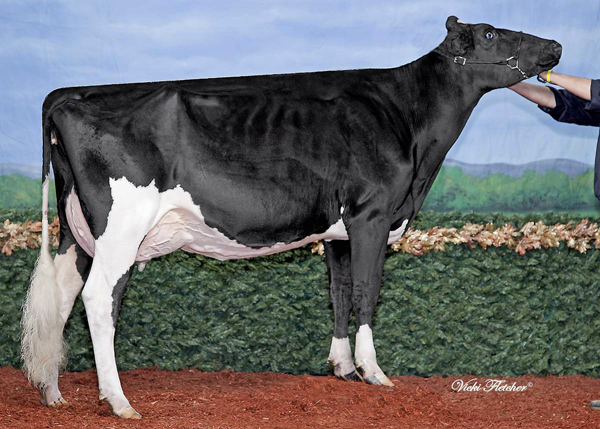
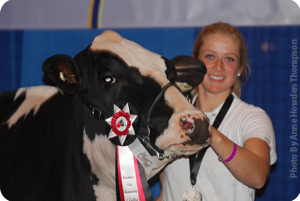 Twenty-five year old Cristy grew up on her parent’s dairy farm, Monteith Holsteins, in Georgetown, Ontario. “My parents exhibit both dairy cattle and Clydesdale horses, so I became involved with competing at an early age. I also began competing in hunter/jumper competitions when I was young and continued to keep a horse and compete until late in high school. Through 4-H my sister and I also acquired and began breeding and showing sheep, so we truly had a well-rounded experience in terms of animal care and competition.”
Twenty-five year old Cristy grew up on her parent’s dairy farm, Monteith Holsteins, in Georgetown, Ontario. “My parents exhibit both dairy cattle and Clydesdale horses, so I became involved with competing at an early age. I also began competing in hunter/jumper competitions when I was young and continued to keep a horse and compete until late in high school. Through 4-H my sister and I also acquired and began breeding and showing sheep, so we truly had a well-rounded experience in terms of animal care and competition.” After playing a year of varsity basketball at the University of Guelph, I was looking for a new sport and a new challenge. At the Don Rowing Club Cristy recalls, “I took to the sport very quickly and began to have race and physiological testing results that caught the attention of the national team coaches. By 2010 I was invited to move to the National Training Centre in London, Ontario.” This has meant raising the bar on her goals. “Right now, I am in Olympic Selection Camp, which is essentially a narrowed-down group of athletes who are still in contention for spots on the Olympic team. I won’t know until the end of May if I will be on the Olympic team, so my biggest goal right now is to be re-selected to the women’s 8. And, of course, to stand on the podium at the London games if I do so.”
After playing a year of varsity basketball at the University of Guelph, I was looking for a new sport and a new challenge. At the Don Rowing Club Cristy recalls, “I took to the sport very quickly and began to have race and physiological testing results that caught the attention of the national team coaches. By 2010 I was invited to move to the National Training Centre in London, Ontario.” This has meant raising the bar on her goals. “Right now, I am in Olympic Selection Camp, which is essentially a narrowed-down group of athletes who are still in contention for spots on the Olympic team. I won’t know until the end of May if I will be on the Olympic team, so my biggest goal right now is to be re-selected to the women’s 8. And, of course, to stand on the podium at the London games if I do so.”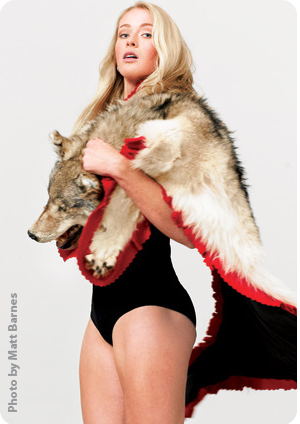
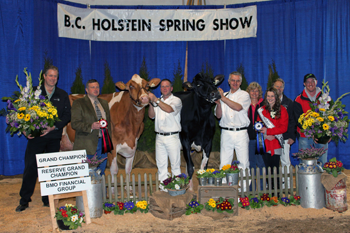
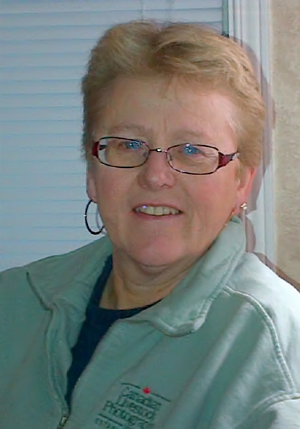 Patty Jones has a passion for cows and for people who share that passion. “I work with a lot of new young farmers. I tell them off the bat what they need to do.” And she says they listen and pay attention. No doubt they recognize that with nearly forty years of experience photographing between 60 and 65000 cows, she knows what she’s talking about. Even longtime clients of Canadian Livestock Photography occasionally forget details. Patty says the young guys know this is important. “I wouldn’t be working if I didn’t help my clients make money. They’re not just taking pictures for the hell of it”! She is sincere about what everyone is aiming for. “If I can help farmers, especially the younger guys, to get going and make a little bit more out of their investment. What the heck? That’s what I do it for.”
Patty Jones has a passion for cows and for people who share that passion. “I work with a lot of new young farmers. I tell them off the bat what they need to do.” And she says they listen and pay attention. No doubt they recognize that with nearly forty years of experience photographing between 60 and 65000 cows, she knows what she’s talking about. Even longtime clients of Canadian Livestock Photography occasionally forget details. Patty says the young guys know this is important. “I wouldn’t be working if I didn’t help my clients make money. They’re not just taking pictures for the hell of it”! She is sincere about what everyone is aiming for. “If I can help farmers, especially the younger guys, to get going and make a little bit more out of their investment. What the heck? That’s what I do it for.”